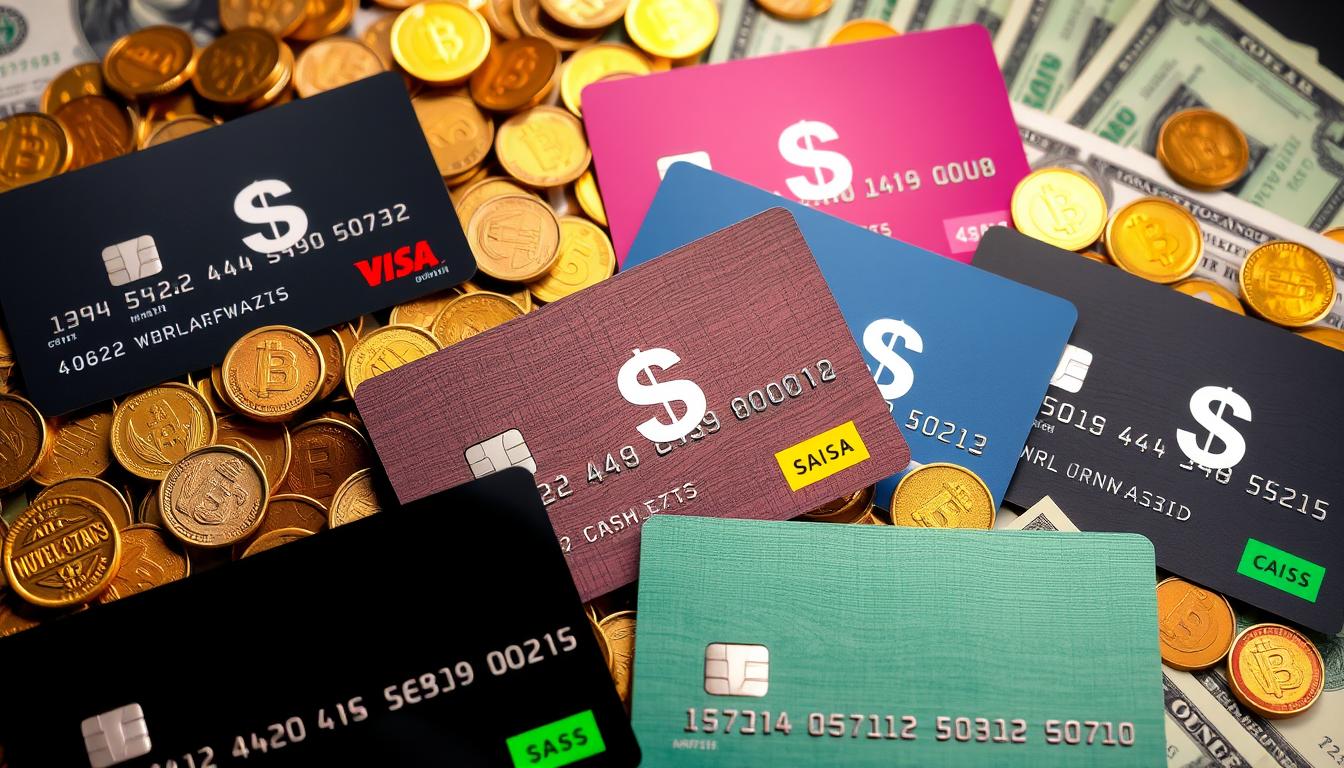Do you want a card for every moment?
Public debt is a big part of Guyana’s economy, showing how the government borrows money to pay for services and projects. With recent oil finds changing the country, it’s key to grasp public debt to keep the economy stable. We’ll look into why public debt matters in Guyana, its history, and its impact on our economic future.

GBTI Visa Gold Card

Introduction to Public Debt in Guyana
Public debt is key to Guyana’s money and economy plans. It’s used to pay for important services and build stuff that helps the economy grow. Good control of public debt keeps the country’s finances stable.
Guyana is making more money from oil, moving up to a richer status. This change shows how vital it is to understand and manage public debt. By managing debt well, Guyana can make the most of its economy and tackle new financial duties.

The Historical Context of Guyana’s Public Debt
Guyana’s public debt has changed a lot in the last ten years. An in-depth look shows major ups and downs. These changes were due to economic trends and how the country managed its finances. Knowing about these changes helps us understand Guyana’s current and future debt situation.
Changes in Debt Levels Over the Past Decade
In the last decade, Guyana has improved how it handles public debt. The ratio of debt to the country’s economy went down from 93 percent in 2006 to about 47 percent in 2020. This drop happened because the government was careful with spending and got better at collecting money.
The total amount of debt compared to the economy went from 61.2 percent in 2008 to 55 percent in 2018. This shows that Guyana’s financial management got better. Good economic policies were key to keeping debt under control.
Impact of Debt Relief Initiatives
International debt relief has been very important for Guyana. It has made paying back debt easier and helped the country focus on growing its economy. This support from other countries, combined with Guyana’s own efforts, made its debt situation better.
Current Public Debt Profile in Guyana
Guyana’s public debt profile shows key trends and plans in managing central government debt. It examines how the government’s borrowing matches its fiscal strategy and its ability to manage debt. This highlights the need for clear and sustainable financial practices in Guyana.
Overview of Central Government Debt
By the end of 2020, Guyana’s central government debt was around G$200 billion. This debt is mainly from loans with easy terms. The central government’s debt is crucial for shaping the country’s economic policy, showing a focus on favorable loan terms. Grasping this context is important for assessing the government’s financial health.
Breakdown of External and Domestic Debt Sources
The government’s debt includes loans from outside and inside the country. The government aims to keep borrowing costs low while meeting its financial duties. This blend of debt sources underlines the importance of international ties and local funding for financial balance.
Role of Multilateral Institutions
Multilateral institutions play a big role in managing Guyana’s government debt. They provide money help and advice on economic policies. Their aid is crucial for the government to handle its debt properly and grow the economy.
Debt Sustainability Analysis and Risk Assessment
Guyana’s look at debt sustainability is key for its fiscal policy and economic health. It shows a moderate risk of debt problems. This is mainly due to the expected boost from oil production. Checking this regularly helps understand financial health and risks.
Moderate Risk of Debt Distress
The Joint Bank-Fund Debt Sustainability Analysis says the risk is manageable. Guyana works hard to keep external debt low, which helps avoid trouble. This strong fiscal plan keeps the economy stable, even when times are tough.
Potential Shocks and Vulnerability Indicators
Yet, the nation could face challenges from big outside shocks, affecting how it handles debt. Things like changes in global markets or commodity prices could be risks. But, Guyana’s low external debt acts like a cushion, helping it manage and bounce back from these issues.
Impact of Oil Production on Public Debt Dynamics
Guyana’s oil sector is set to change how the nation deals with public debt. The country has found about 11 billion barrels of oil. This makes Guyana a big deal in the Caribbean oil scene. The start of oil production, like with Liza Phases I and II, will do more than just make money. We will look at the oil that’s already been found and what might happen next. We’ll also see how oil money can help lower the country’s public debt.
Current Oil Reserves and Future Projections
People worldwide are watching Guyana’s huge oil reserves closely. The boost in oil production will bring a lot more money. This means the government can work on lowering its debt. Experts think oil production will go up a lot soon. This promises good things for Guyana’s economy in the future.
Fiscal Implications of Oil Revenue
The money from oil is very important. More oil means more income for the country. This opens the door to managing the country’s money better. The government can use this chance to pay off debts, easing financial stress. It’s critical to use this money wisely to make the most of it and ensure Guyana’s financial security.
Government’s Public Debt Management Policy
The Government of Guyana aims to balance its borrowing from 2021 to 2024. This plan strives for transparency and accountability in managing public debt. It will help build a strong basis for managing the country’s finances well.
It’s crucial to set up good governance to oversee both local and international loans. This way, Guyana can ensure its borrowing supports its financial goals.
Objectives and Governance Structures
Key goals include:
- Keeping debt at manageable levels.
- Borrowing wisely to meet fiscal aims.
- Improving laws and systems for public debt.
The governance model will bring together various governmental players. This ensures decisions on debt help improve the nation’s economy. By borrowing responsibly, Guyana can manage outside funds well and reach its development targets.
Strategies for Optimizing Financing
To better manage financing, the government plans to:
- Look at various funding sources to spread out debt.
- Hold talks regularly with big financial organizations.
- Keep an eye on economic trends to stay flexible.
These actions aim to boost financial health and help Guyana’s fiscal plans. This approach hopes to make public debt support growth, not hinder it.
Key Challenges Facing Public Debt in Guyana
Guyana faces big issues with its public debt, mainly because it leans heavily on debt from outside the country. This makes up over 60 percent of its total public debt. Such dependence is troubling for the country’s economy and financial health.
To deal with these problems, Guyana must really understand the downsides of having a lot of foreign debt.
External Debt Dependence
High external debt puts Guyana’s economy at risk. Depending on money from other countries can be risky. If the world’s financial markets have problems, Guyana could feel it too.
This could hurt key areas like roads, healthcare, and schools. Money for these could dry up when the economy is down. So, it’s very important for Guyana to be smart with its money to avoid these issues.
Currency and Refinancing Risks
When Guyana borrows money from other countries, it often has to pay back in foreign currencies. This can be risky because it might make paying back the debt more expensive if currency values change. Handling the budget becomes trickier.
It’s vital for Guyana to find good ways to deal with these currency risks. They also need to plan smart for paying back the debt. This will help keep the country stable in the long run.
Future Outlook for Public Debt in Guyana
Guyana’s public debt is closely linked with its economic growth, thanks to the booming oil sector. The country expects an average real GDP growth rate of 16.8 percent from 2022 to 2032. Such growth is crucial for strategies that reduce debt and keep the economy stable.
Projected Economic Growth and Debt Reduction
With its large oil reserves, Guyana is poised for high growth rates. This growth promises to improve the country’s fiscal health. A better debt-to-GDP ratio is expected, aiding government efforts in public debt management. Key factors include:
- Increased oil revenue to bolster national income.
- Opportunities for diversifying the economy, reducing reliance on oil.
- Implementation of robust debt reduction strategies focused on sustainability.
Role of the Natural Resource Fund
The Natural Resource Fund will handle oil production wealth wisely. It’s set up to ensure benefits for future generations and help reduce debt. The fund supports government spending on social and infrastructural projects, keeping debt levels in check. Key aspects include:
- Utilizing fund revenues for fiscal stability.
- Facilitating transparent and accountable management of natural resource wealth.
- Fostering economic resilience against global market fluctuations.
Conclusion
Looking at Guyana’s public debt, we see a mix of history, challenges, and hope. The country’s debt is increasing, mostly because of money borrowed from other countries. It’s essential for the government to make smart spending plans suited to Guyana’s economic situation. They must learn from past mistakes to avoid future problems.
Now, Guyana stands at an important point, thanks to its oil industry. This new industry could bring more money to the government. But, it also carries risks that could affect the country’s debt. The government needs to create clear rules for dealing with this money in a smart way.
Future prospects for Guyana’s debt depend on good management and planning. By wisely using oil money and sticking to responsible budgeting, Guyana can grow economically. This approach will help maintain financial health for a long time. Continuing on this path will help build a strong financial system that helps everyone in Guyana.
FAQ
What is public debt in the context of Guyana?
How has Guyana’s public debt changed over the past decade?
What is the current status of the central government debt in Guyana?
What does debt sustainability analysis indicate for Guyana?
How does the oil sector affect Guyana’s public debt dynamics?
What is the government’s public debt management policy for 2021-2024?
What challenges does Guyana face concerning external debt?
What is the projected economic growth for Guyana, and how does it relate to public debt?
How does oil production influence the future of Guyana’s public debt?
Conteúdo criado com auxílio de Inteligência Artificial



